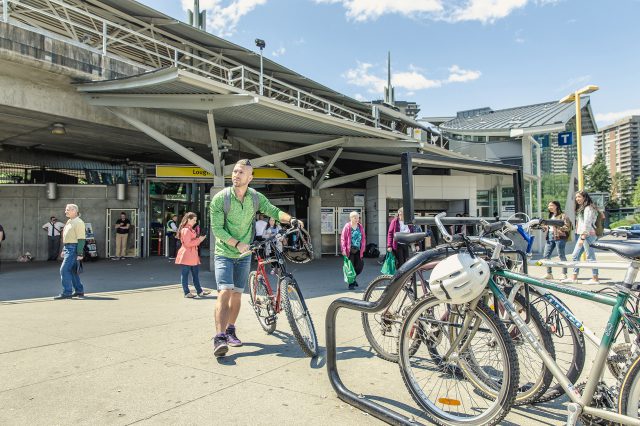Metro Vancouver’s cycling network nearly tripled last decade
Metro Vancouver’s cycling network nearly tripled last decade


HUB Cycling and TransLink have partnered to release the first ever State of Cycling Report for Metro Vancouver.
The report assesses the region’s quality and quantity of bikeways, the number of residents regularly cycling, and the safety of the cycling network. The rich new data set will help people who cycle better plan their trips by providing an accurate picture of the cycling network.
“HUB Cycling’s goal for the project is to advance the development of a complete regional cycling network that is accessible and comfortable to people of all ages and abilities” said Jeff Leigh, HUB Cycling’s Vice President. HUB Cycling President Derik Wenman added, “We congratulate TransLink and staff from all the region’s municipal governments for agreeing to work with HUB Cycling on this project. We will all benefit from what we have learned.”
HUB Cycling and TransLink engaged with 21 local municipalities, one Electoral Area, and one Treaty First Nation to develop a framework for classifying the nature and comfort levels of different cycle route types. The report finds that while the region has come a long way in building more bikeways, more can be done to make the network more comfortable for people who cycle. Its research shows that only 46 per cent of bikeways are comfortable for most people.
“As cycling becomes safer and more convenient, people will choose to cycle more,” says TransLink CEO Kevin Desmond. “By expanding our bike parkade program and investing in cycle paths throughout the region, our system is one of the most cycle-friendly transit networks in Canada. We welcome and encourage the growing number of people who are choosing to use sustainable modes of transportation each day.”
The data will also be shared with regional municipalities and the Province of British Columbia to help make recommendations about future cycling infrastructure investments.
Quick facts:
- The length of bikeways in the region has nearly tripled from 1,700 kilometres in 2009 to 4,600 kilometres in 2019
- The share of female cyclists in Metro Vancouver grew from 33 per cent to 35 per cent between 2006 and 2016
- In areas where the network has grown or improved, the rate of cycling collisions has dropped, and the number of cycling trips have increased dramatically
- 60 per cent of Metro Vancouver residents live near a bikeway that is considered comfortable for most people
- The percentage of commuters using sustainable modes as their primary source of transportation has increased from 24 per cent in 2011 to 27 per cent in 2017
- TransLink invested approximately $15 million in 2019 to build new or improve existing Metro Vancouver cycle paths
Learn More:
State of Cycling Report Link






I enjoy most of Vancouver’s bike routes, but the road way on west 10th near arbutus street outside the elementary school is very rough with broken pavement. Will this stretch of road be upgrade in near future?